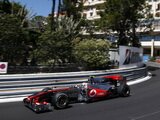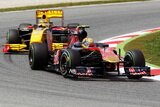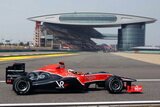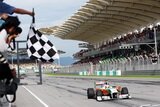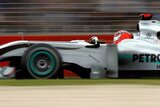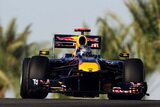
For round 17 of the FIA Formula One World Championship, the grand prix moves to South Korea, to write a new chapter in the sport's history. This inaugural Korean Grand Prix takes Formula One to the fast-developing Asian state, whose economy is now the world's 15th-largest.
Having previously hosted the Olympic Games and the football World Cup, South Korea is no stranger to staging world-class sporting events and for the country's venture into Formula One, race organisers KAVO — the Korean Auto Valley Operation — have overseen the construction of an anxiously awaited all-new motor-racing facility. The design and build of the Korean International Circuit (KIC) has been led by Formula One's noted circuit architect Hermann Tilke. For this, Tilke's sixth 'from-scratch' Formula One undertaking, the company has taken design inspiration from Korean emblems. The main grandstand roof, for example, is modelled on the eaves of a 'Hanok', a traditional Korean house. The circuit itself, meanwhile, features sections intended to recreate favourite corner sequences of more traditional Formula One circuits, such as Silverstone’s Becketts complex.
The timing of the race, in what has become a classic Formula One season, means the KIC will be the venue for another clash between the five drivers to have led the fight for the championship since round one in Bahrain last March: Mark Webber (Red Bull Racing), Fernando Alonso (Ferrari), Sebastian Vettel (Red Bull Racing), Lewis Hamilton (McLaren) and Jenson Button (McLaren). After 16 rounds they remain separated by only 31 points, with 75 available. The three-way constructors' tussle also remains poised, with Red Bull Racing on 426 points, McLaren on 381 and Ferrari on 334.
FAST FACTS: KOREAN GRAND PRIX
The circuit is located in Yeongam on reclaimed land between the hills outside the city of Mokpo in the south western province of Jeollanam-do. KIC is approximately 400km from South Korea's capital, Seoul.
On September 4 this year, Karun Chandok became the first Formula One driver to run at the circuit, driving a Red Bull Racing show car. He commented: “The circuit is pretty cool to drive and the layout is really quite interesting. The first bit of the lap is mega-long straights, then from turn seven onwards it’s feisty, fast-flying stuff.”
KIC becomes the fifth Formula One circuit to run anti-clockwise, joining Turkey’s Istanbul Park, Singapore’s Marina Bay, Interlagos in Brazil, and the Yas Marina circuit in Abu Dhabi.
The circuit has been designed to be part-permanent, part-Formula One-only. For the Grand Prix, the permanent track layout will be extended to run alongside the nearby waterfront and harbour.
120,000 grandstand seats will line the circuit. The total spectator capacity is 135,000.
CIRCUIT DATA
Length of lap: 5.621km
Start line/finish line offset: 0.000km
Total number of race laps: 55
Total race distance: 309.155km
Pitlane speed limits: 60km/h during practice sessions; 100km/h during qualifying and race
ADDITIONAL MEDIA OPPORTUNITIES
Qualifying: All drivers eliminated in Q1 or Q2 will be available for media interviews immediately after the end of each session as will drivers who participated in Q3, but who are not required for the post-qualifying press conference. Where? At the back of the FIA weighing garage, paddock side.
Race: Any driver retiring before the end of the race will be available for media interviews after his return to the paddock. In addition, all drivers who finish the race outside the top three will be available for media interviews immediately after the end of the race. Where? At each team’s individual garage/hospitality or alternatively at the back of the FIA weighing garage, paddock side.
Korean International CIRCUIT'S LOCATION
Comments:


